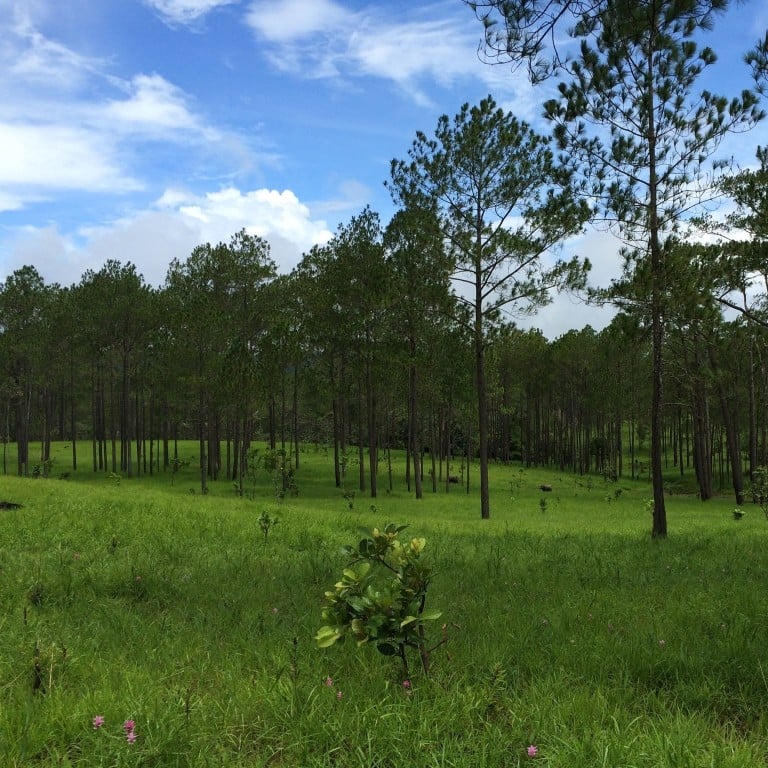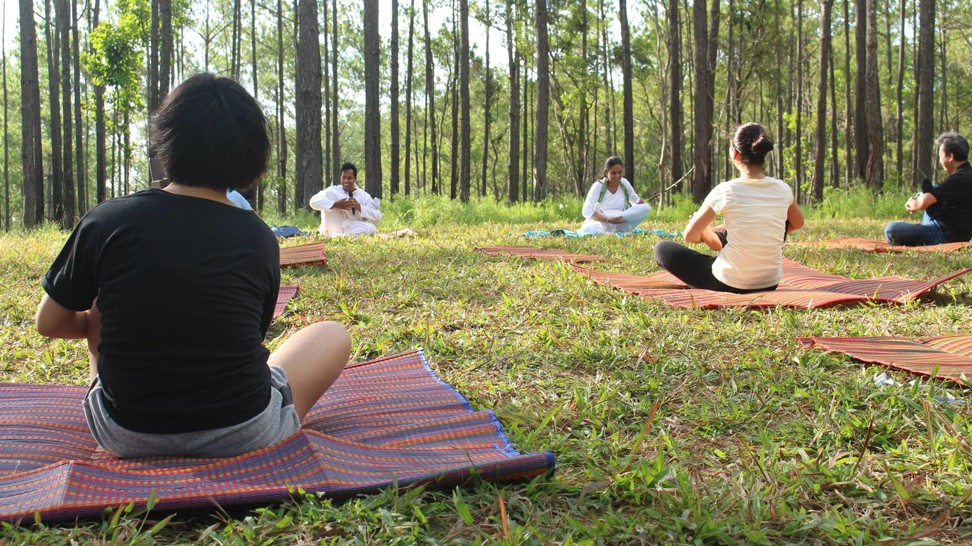
Is this really Cambodia? Pine-clad national park is a dream for hikers and mountain bikers
- Kirirom National Park, with its high elevation, lower temperatures and sun-kissed pine forests, is quite the contrast to the rest of Cambodia
- A former royal retreat, today the park is back on the map for visitors thanks to new outdoor activities and accommodation
Stepping out of the steamy bus brings a wave of relief as a delightfully cold breeze blows by. As Cambodia settles into its hottest month of April, the cool provides a welcome contrast to the country’s mounting muggy heat.
But it isn’t only the climate that makes a visit to Kirirom National Park feel like a trip to another continent. With its high elevation, lower temperatures and sun-kissed pine forests, it wouldn’t look out of place in Europe.
It was the area’s cooler weather and pristine natural beauty that led the late King Norodom Sihanouk to make Kirirom an exclusive royal retreat for the country’s elite in the 1950s and ’60s, when a collection of stylish villas was built atop Kirirom Mountain.
The Khmer Rouge reign of 1975 to 1979 brought the country to a standstill, and an end to the Cambodian dream embodied by Kirirom. For decades afterwards, the area was abandoned and the villas left to fall into ruin. Only in recent years has Kirirom – which means Mountain of Joy – begun to make a comeback.

Today, outdoor activities and new accommodation have put Kirirom back on the map for visitors. Future development plans look set to make it one of Cambodia’s rising destinations.
Spanning more than 35,000 hectares (135 square miles), the park is peppered with trails that wind through verdant forest, rolling hills, deep valleys and small villages, and which offer views of the nearby Cardamom Mountains.


This makes it a mountain biker’s dream, and several cycling tours exist ranging from half- to multiple-day trips. Many of the park lodgings rent out bicycles for those wanting to hit the trails at their own pace.
Hikers can walk beneath the towering pines, accompanied by birdsong and the call of monkeys, and look out for some of the animals that call the forest home: endangered sun bears, rare pileated gibbons, a handful of Asian elephants, banteng (wild cattle) and spotted linsang, a tree-dwelling catlike carnivore.
One of the places that began the revival of Kirirom National Park is Vkirirom Pine Resort, an eco-resort operated by a Japanese company that is building exclusive holiday homes among the landscape. For now, sleeping options at the resort include camping in two-person tents, staying in snug rooms made out of huge converted concrete pipes, and spending the night in a wooden Khmer cottage or villa. The resort has an outdoor swimming pool and a spacious restaurant.

Activities at Vkirirom include stand-up paddle boarding, bubble football, a frisbee golf course and the traditional Khmer game of veay ka’am. The game, commonly played in villages during Cambodian New Year, sees blindfolded participants attempt to smash clay pots dangling from trees with a long bamboo pole.
For a taste of forest life, Chambok Eco-tourism Site offers 42 homestays in nine farming communities on the park’s fringes. Guests can experience village life by accompanying host families as they tend to cattle, feed pigs and chickens, and work their small plots of land.
Guests at Chambok can travel around by ox cart – a bumpy yet exhilarating way to explore the surrounding countryside. Commonly used to transport people, goods and machinery, and for ploughing, ox carts trundle along dirt tracks through the woods and open paddies.

Female elders show visitors how to weave colourful necklaces, rings and bracelets. A restaurant which employs 328 local women holds cooking classes. Freshly caught river fish, and vegetables and rice harvested locally, are turned into delicious meals.
Kirirom Waterfall, reached via narrow trails that cut through jungle shrub and cross streams via rickety wooden bridges, is the place to cool off after a hike. Just dive into the clear waters of the pool beneath the 40-metre-high (131 feet) main fall, which gushes with water in the rainy season. A series of gently cascading waterfalls continues downstream.
Visitors can find the waterfall with ease, but Chambok puts on treks that range from a two-hour jaunt to the swimming spot through to three-day camping trips in the heart of the forest.

Other tour options include The Mountain by Zin Adventures. The tour takes visitors to the king’s state cottage, designed by Cambodian architect Vann Molyvann and torched in 1970 during the civil war, and Ampe Phnom, a Buddhist temple famous for its fortune-tellers.
Cyclists can join SpiceRoads for a two-day, one-night Kirirom Explorer excursion; those who want to cycle the park independently can check in at Vkirirom or Kirirom Mountain Lodge Hill Station. The hill station comprises two mountain chalets that are testament to Vann Molyvann’s New Khmer Architecture style – a movement that combined modernism with classic Khmer designs, and which swept the country during the 1950s and ’60s. They also offer a tranquil resting spot.

Getting there: Phnom Penh is the closest airport, from which a trip by private taxi takes two to three hours. Alternatively, catch a bus to Koh Kong, Kampot, Kep or Sihanoukville and get off at Treng Trayeng, where there will be tuk tuks and taxis waiting to take you the last short leg of the journey.

